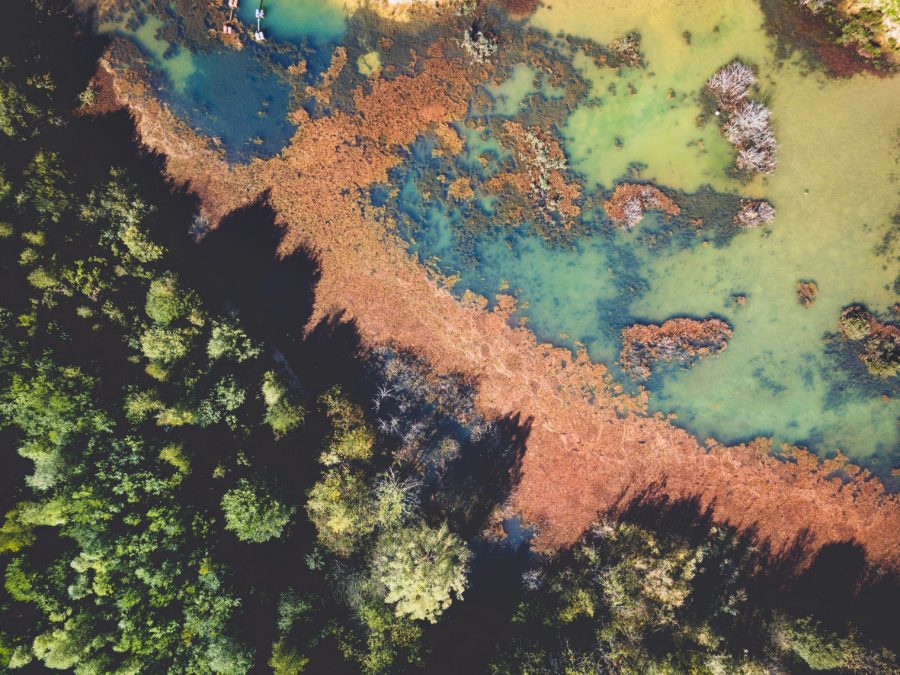A new paper from Deakin University argues that the post-2020 Global Biodiversity Framework must include a goal for sustaining ecosystems.
The United Nations’ global vision for living in harmony with nature by 2050 will not succeed without a robust focus on sustaining ecosystems, according to our new research.
In July 2021, the UN Convention on Biological Diversity (CBD) released the first draft of a new global agreement for biodiversity, designed to sustain nature and its contributions to people.
The post-2020 Global Biodiversity Framework (GBF) follows on from the Aichi Targets of the Strategic Plan for Biodiversity 2011-2020, which were largely not met. The post-2020 framework will be negotiated in October by representatives of 196 parties at the CBD Conference of the Parties (COP15) in Kunming, China.
In our new paper, published in Nature Ecology & Evolution, we argue that in addition to goals for species, genetic diversity and nature’s contributions to people, the post-2020 GBF must specifically address ecosystems. We outline the science for an effective ecosystem goal and review available indicators to measure progress.
Our international collaboration is a coalition of experts from every continent (except Antarctica), working across land, sea and freshwater ecosystems at universities, government and non-government organisations, such the International Union for Conservation of Nature (IUCN), the UN Environment Program, and Wildlife Conservation Society.
Reversing, not just halting, the loss of biodiversity
Sustaining and restoring ecosystems is central to meeting goals for species and the benefits nature provides to people. Ecosystems are key to our resilience in the face of climate change. They support the many species and natural places we love, providing us with clean air, water, food, recreation and cultural identity.
The draft post-2020 framework seeks to reverse the loss in ecosystem area and integrity, which is a sound start, but insufficient to halt loss of biodiversity. An ecosystem goal must go further and also ensure that the collapse of ecosystems is prevented, just as the goal for species must prevent extinctions.
Including reference to ecosystem collapse – the point at which ecosystems lose characteristic features, species and functions – provides a benchmark for unacceptable declines in area and integrity.
This can help us focus our effort on threatened ecosystems, which can be identified by approaches such as the IUCN Red List of Ecosystems, in which Deakin is a world-leader.
Defining pathways for future success with conceptual modelling
The post-2020 framework is comprised of outcome-oriented goals, and a set of action targets needed to achieve them.
For the framework to be effective, the relationship between goals and targets must be clear; a theory of change is a conceptual modelling approach for mapping pathways from intervention to impact and clarifies assumptions of cause and effect.
We developed a simple theory of change to support an ecosystem goal. It depicts the relationships between direct drivers of biodiversity loss and the goal components of ecosystem area, integrity and collapse risk (Figure 1), and how action targets (in blue) contribute to achieving the goal by focussing on actions to stop further loss and degradation and restore ecosystems.

Measuring trends and progress towards goals is also vital to achieving positive outcomes. Our research team also reviewed 28 indicators that have been proposed for the ecosystem goal. We found large gaps in the types of ecosystems and components of the goals that can be tracked.
The suggested indicators for ecosystems are not all fit-for-purpose, meaning that the indicator set will not provide a clear picture of how all ecosystems are changing world-wide.
For example, indicators can track loss in area for many ecosystems and general loss of biodiversity (e.g. land-use change) for many ecosystems, but few can tell us how particular ecosystems are becoming degraded and losing the species and functions that make them unique.
Expanded indicator testing (e.g. capacity to reveal meaningful trends), particularly for indicators of ecosystem integrity, and investment in ecosystem mapping will be essential for a clearer picture of how ecosystems are changing globally.
The next 3–5 years will be key in making it possible to track ecosystem integrity, with many new indicators recently developed and still undergoing testing and expansion (including those developed by Deakin researchers).
To make the most of the coming advances, we recommend that the UN makes the monitoring framework a living document that can embrace new indicators once they are adequately tested or have sufficient data to be fit-for-purpose.
A critical opportunity to sustain our ecosystems
Given the rate of biodiversity loss globally – with 75% of our planet’s land significantly altered by people and around one million species facing extinction – the new post-2020 goals provide a critical opportunity for world leaders to set a clear agenda for sustaining all ecosystems into the future.
This goal can be met, provided it addresses the key elements required to sustain ecosystems, through carefully designed targets, and indicators to monitor successes and failures.
Emily Nicholson is a Professor in Conservation Science at Deakin University.
The paper, Scientific foundations for an ecosystem goal, milestones and indicators for the post-2020 global-biodiversity framework, is published in the journal Nature Ecology & Evolution.




